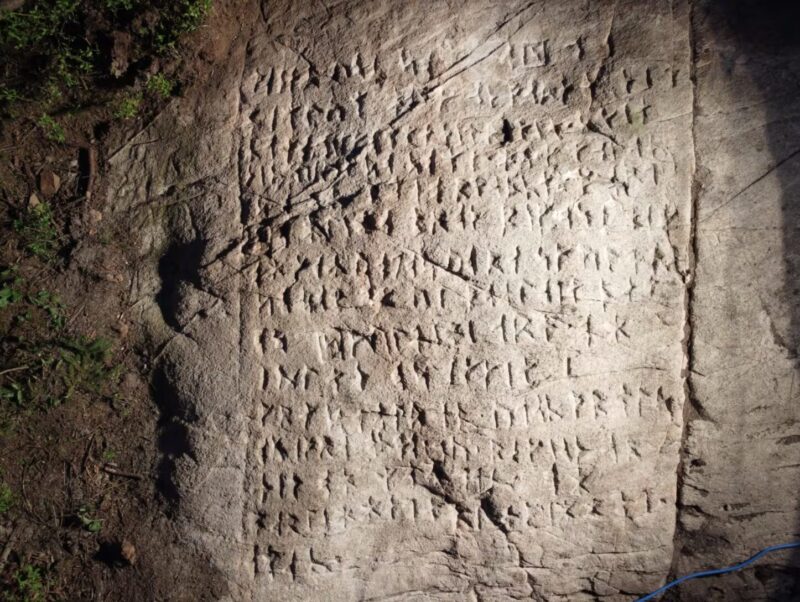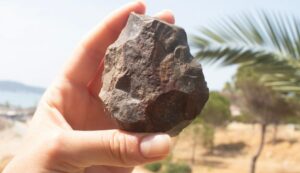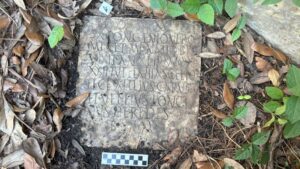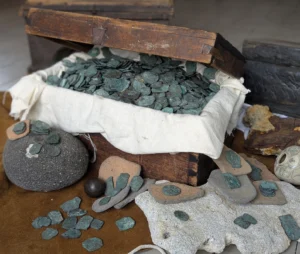Deep in the northern Ontario bush, there is a stone covered in strange markings. No one knew it existed until a tree fell over and exposed it. Carved into the slab of rock are a series of ancient runes that archaeologists have been trying to decipher for years.
The stone was found in 2018, and pictures of it were quickly sent to Ryan Primrose, the director of the Ontario Centre of Archaeological Education.
“It’s certainly among the least expected finds that I think I’ve encountered during my career. It’s absolutely fascinating,” he told the Canadian Broadcasting Corporation.
Primrose was worried people would assume that the markings on the stone slab were created by Vikings, so he has been quietly working on the mystery for seven years.
“We didn’t want to release information publicly until we had done as much as we could at the time to understand exactly what it was,” he said.

Photo: Ryan Primrose
The stone slab, about the size of a small tabletop, is half-buried in the rocky ground. From a distance, it looks as though it is covered in scratches. It is actually a series of 255 runes alongside an illustration of a boat and 16 further runic symbols that have been purposefully carved into the rock.
Primrose decided to bring in runology expert Henrik Williams. He flew over from Sweden and sat under a tarpaulin for three hours with a flashlight, looking at the runes. He realized the symbols were Futhark alphabet runes, which were originally used in Scandinavia.
A confusing timeline
Etched into the bedrock is an early Swedish rune version of The Lord’s Prayer. The prayer can be traced back to 1611. This initially caused confusion. There were no Swedes in the region at that time, so who could possibly have carved this into the rock? But the prayer was republished in the 19th century, and at that time, the Hudson’s Bay Company did employ some Swedes. They had a trading post in Michipicoten, which is relatively close to the runes.
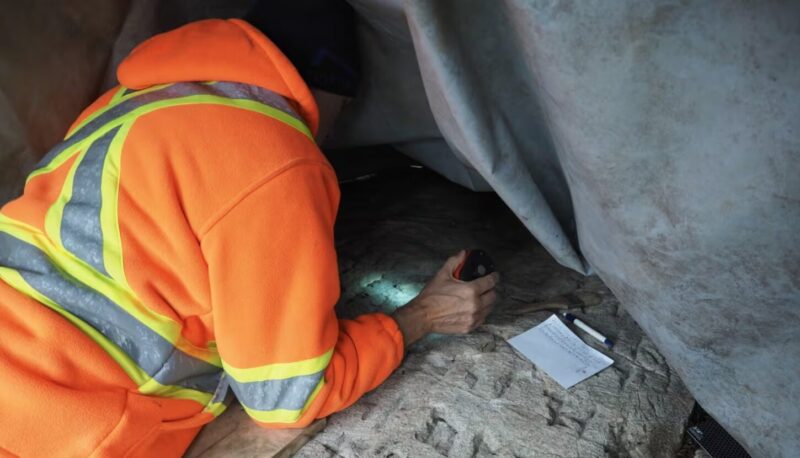
Photo: Ryan Primrose
There is no way to know exactly how the carvings came to be, but Primrose and William reasonably think that someone working for the Hudson’s Bay Company is responsible. Etching all 255 runes into the rock is a task that would have taken days or weeks. Once created, they believe it might have been a central point for religious prayer or for Swedes to come together.
This timeline means that the stone is much newer than many would assume. Researchers estimate that it was carved around 1800. The team admitted they were a little disappointed to discover that the runes were not older.
